Thommanon Devata
By Kent Davis
Siem Reap, Cambodia - The small, elegant Khmer temple of Thommanon is located just outside the Gate of Victory that gives access to the ancient walled city of Angkor Thom from the east. Directly to its south is the small temple of Chau Say Tevoda, currently under restoration.
Thommanon was likely built by the Hindu King Suryavarman II, who also built the magnificent temples of Angkor Wat and Beng Melea between 1,113-1,150 A.D. While some suggest that Thommanon may have been initiated under the reign of Jayavarman VI (1,080-1,113 A.D.) the distinctive artistic subtleties of the devata (sacred female) images suggest a direct link to Suryarvarman II.
As in other Khmer temples, the female devata of Thommanon dominate the structure. Of special interest here is seeing how these devata exhibit attributes quite similar to their sisters at Angkor Wat: flower crowns, sampots (the wrapped skirt of Cambodia) and necklaces, armbands, belts and ankle bands are all familiar.
The distinctive "devata mudra" position of the hands.
Note the distinctive way their hands grip flower stems using the ring and middle fingers while the index and small finger are extended. I call this the “devata mudra” because it is so prominent at Angkor Wat.
Yet, in 150 years of study why has no one recognized that nearly all of the devata exhibit clear and complex mudras? Google some keywords now to see…mudras, apsaras, angkor wat, devata…yet there is nothing of substance. How is it possible that all the learned scholars have missed the symbols these thousands of women clearly display?
I propose this is because Khmer experts have not yet acknowledged that the women (who dominate the most important monuments) are significant! Now that is changing.
Here is another intriguing clue at Thommanon…
Thommanon devata sampot variations: ancient (left) and 12th century Angkor Wat style (right)
The devata portrayed wear two distinct types of sampot (the Khmer skirt wrapped around the waist): the ancient pleated style, seen in the Bakheng period at Lolei and Phnom Bok (900AD) and the patterned fabric style with folds and “tail” that is seen at Angkor Wat.
It is interesting to note that the devata wearing the pleated style at Thommanon are all elevated to higher positions, implying that these ancestors are perhaps being honored above the “contemporary” devata.
There are most mysteries and clues where these came from. What do you see?


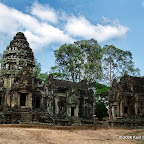

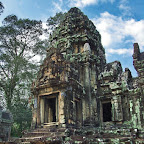

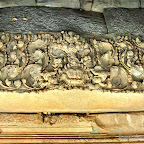

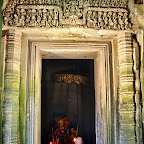
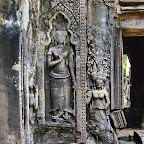
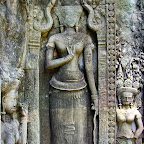
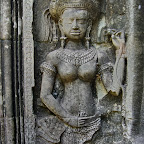

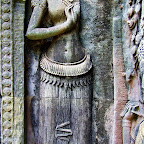
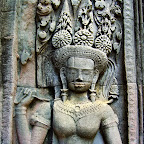

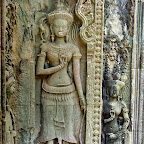
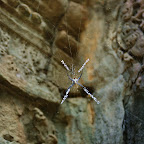


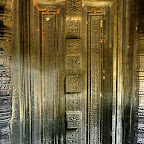

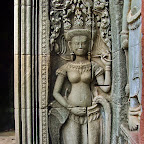
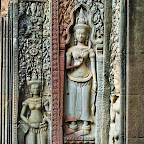

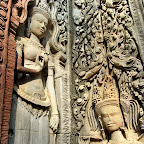


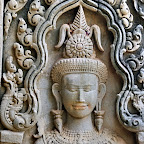

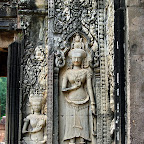
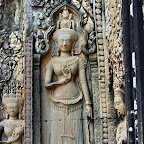


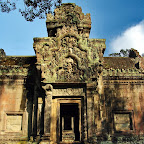
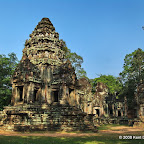
No comments:
Post a Comment